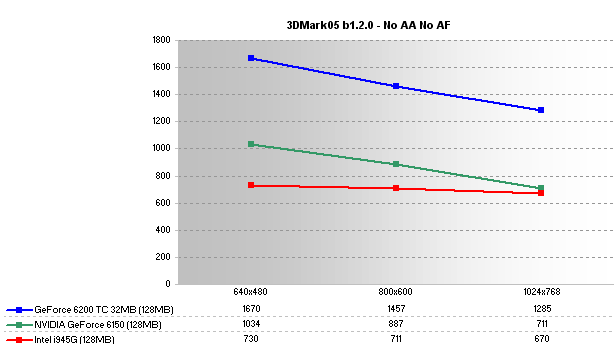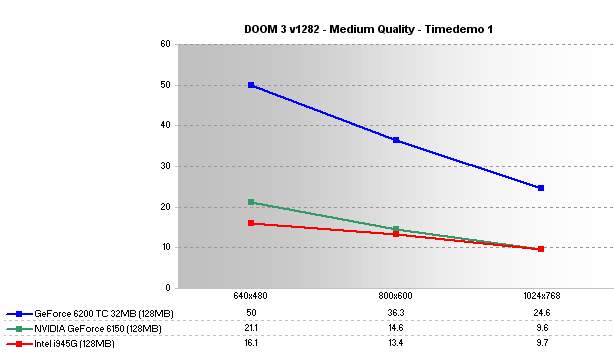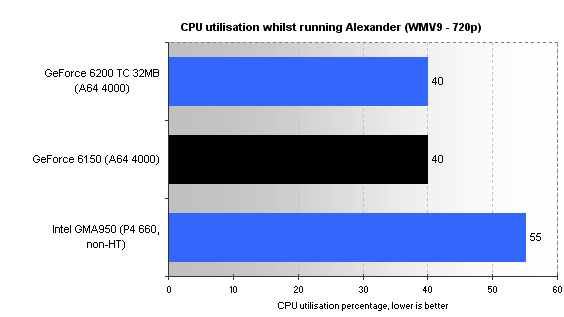GeForce 6150 performance
GeForce 6150 3D performanceThe PureVideo-supporting GeForce 6150, NVIDIA says, isn't all about 3D performance. High-Definition video playback (WMV9 and MPEG-2, up to 1080p), multiple connectivity options, and high-quality video scaling, amongst other features, makes it attractive to users who may well be contemplating an HTPC setup. However, we couldn't let the opportunity pass without testing the raw performance of NVIDIA's newest IGP. We ran DOOM 3 and Far Cry at medium detail, along with the obligatory 3DMark05 b1.2.0, to see just how well it stacked up against Intel's GMA950 (found on i945G mainboards) and against NVIDIA's very own discrete GeForce 6200 TurboCache card (32MB onboard, 128MB system).



The numbers which, incidentally, relate to 640x480, 800x600, and 1024x768 resolutions, tell us that the GeForce 6150 is faster than Intel's GMA950 until fillrate begins to become the limiting factor. The GeForce 6150, a Shader Model 3.0 accelerator, is capable of rendering incredible eye candy, but just don't expect much more than a slideshow when, say, Splinter Cell (SM 3.0 path) is run at full detail. Performance also falls some way short of a basic, discrete 3D accelerator.
Non-3D performance
High-Definition (HD) MPEG2/WMV9 playback is a feature that will have a number of readers interested. Promising low CPU utilisation when playing video of up to 1080p (1900x1080, progressive) resolution, it seems like an HTPC enthusiast's dream. To evaluate such a claim, we ran the 720p and 1080p WMV9 clips of the film Alexander.


There seems to be some merit in the GeForce 6150's HD playback ability. Note that the cheaper, more basic GeForce 6100 doesn't support hardware-assisted playback.
2D quality
Judged via a Dell P991 19" flatscreen CRT which was run at 1280x1024, NVIDIA's GeForce 6150 produces a cleaner, crisper image than Intel's GMA950, whos quality tends to nosedive at higher resolutions and refresh rates.









